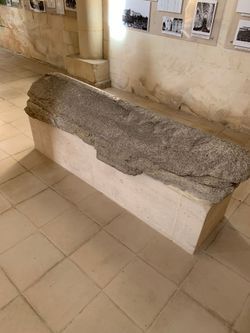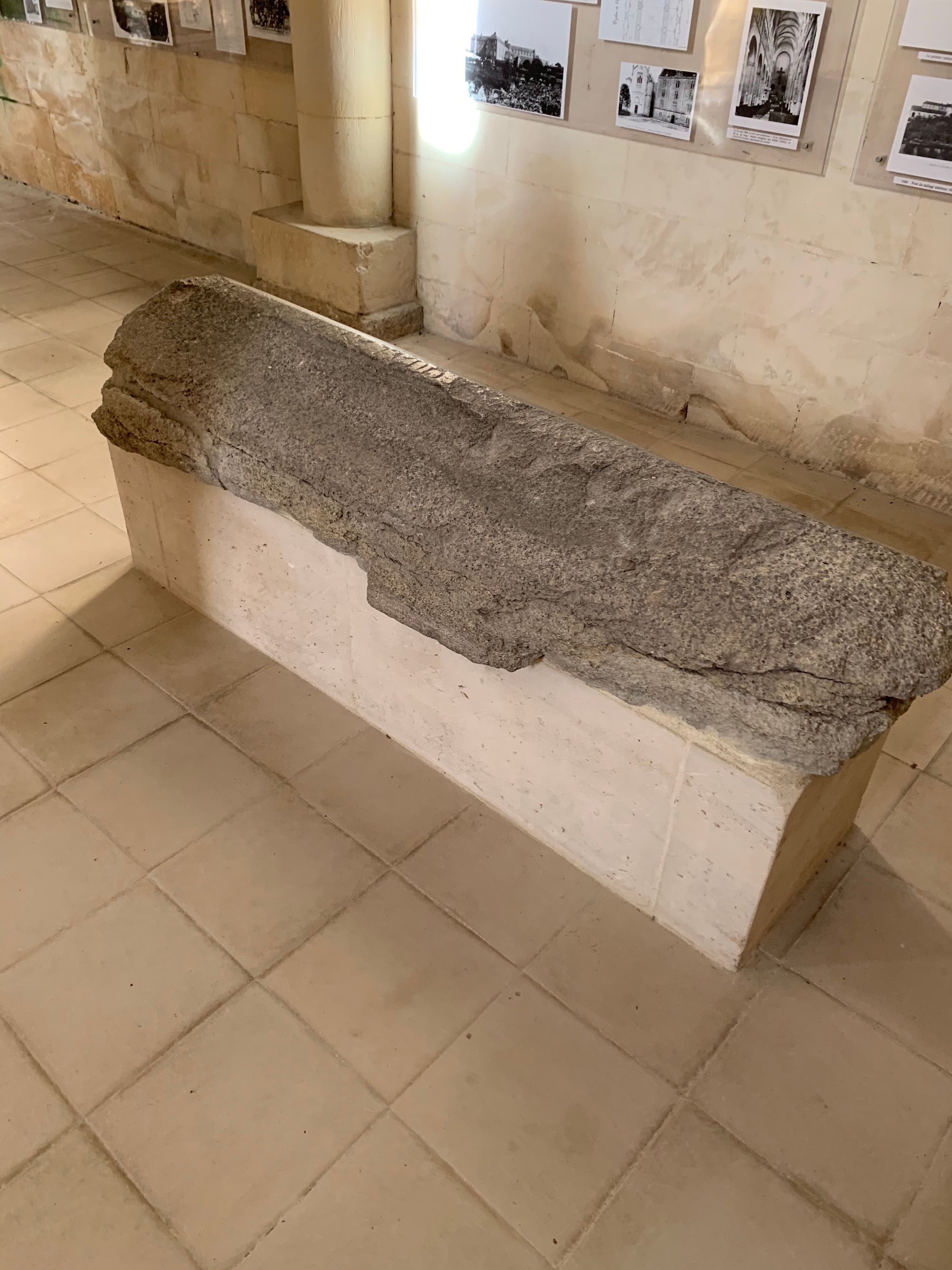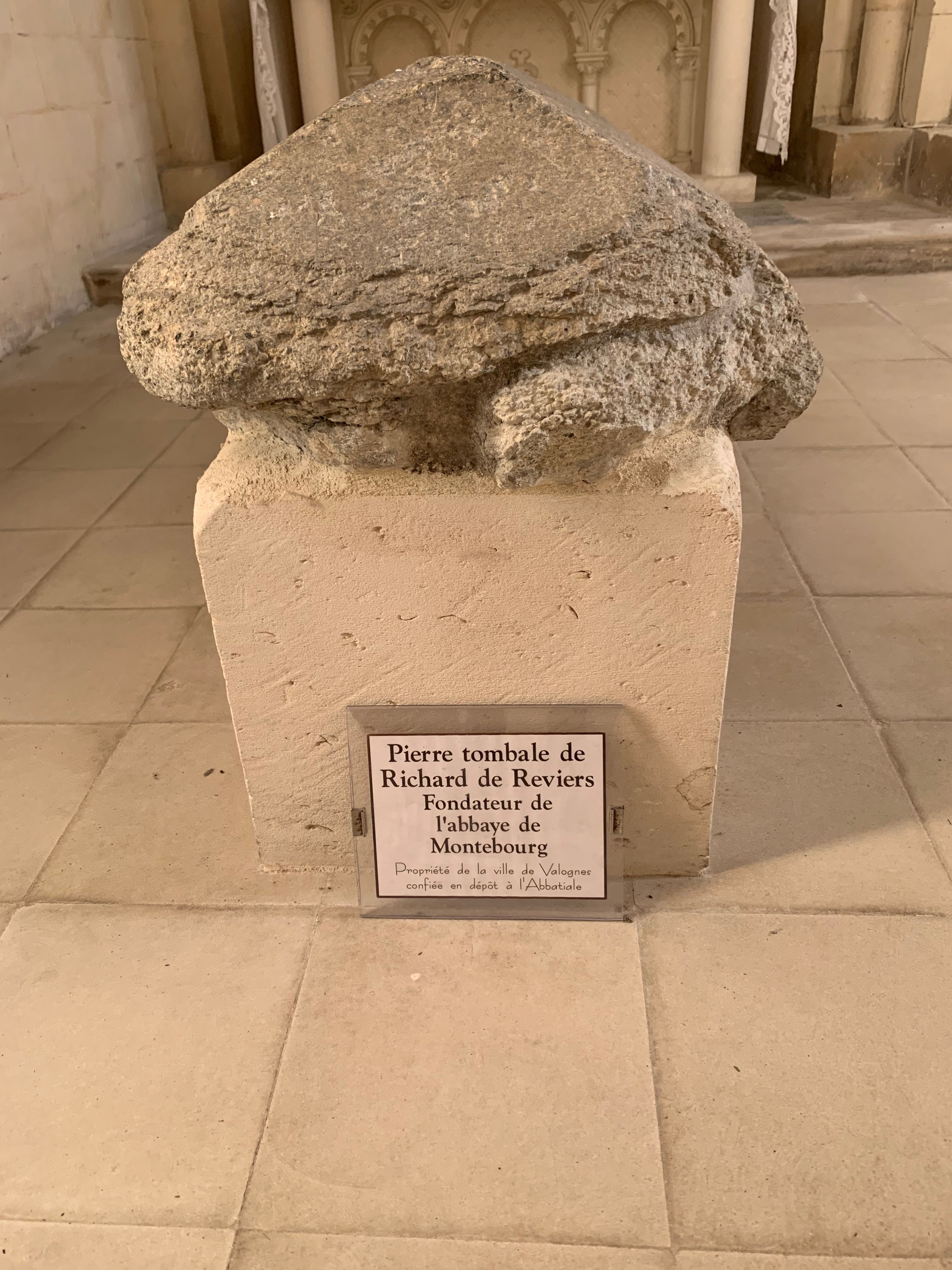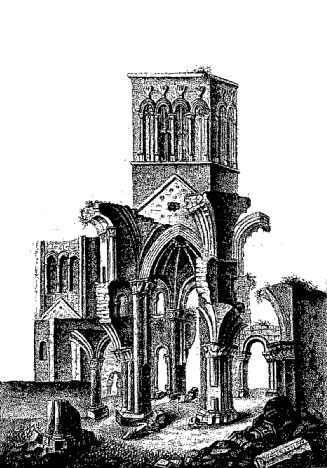By his wife, Adeliza, he left a son, Baldwin,
who succeeded him as 2nd Earl of Devon, and whose wife was also called Adeliza or Adeline.
Some historians argue that this Adeliza, was the wife of Richard de Redvers, 1st Earl of Devon. A comparison of dates — to say nothing of the fact that he is shown to have been her uncle — will prove the incorrectness of the statement. The generally accepted account is that Adeliza, sister of Richard de Brion, died without issue, and that she had a sister called Emma, who was twice married— 1st, to William Avenel, by whom she had a son called Ralph; 2nd, to Robert de Averanches, whose issue was another son, called Robert.
Richard "Le Bon," Duke of Normandy, besides his sons Richard and Robert, the latter of whom was the father of William the Conqueror, had a natural son, who is known in history as Godfrey, Earl of Ewe, or Owe in his native country. Godfrey, Earl of Ewe, had a son, Gilbert, Earl of Brion, 1st cousin to the Conqueror, who was the father of Baldwin De Brion, Lord of Okehampton, and also of Richard Fitz-Gilbert; the latter held 1 manor in demesne, that of Levaton, in Woodland, at the period of the Domesday Survey (IDS'?), besides 6 under his brother Baldwin, 1 under William Portitor, or the doorkeeper, 1 under Ralph de Pomeroy, and 5, among which was Cotlega, or Cotleigh (afterwards given to St. James's Prioiy), under Robert, Earl of Moreton, or Mortaigne, the uterine brother of King William. This Richard Fitz-Gilbert assumed the name of De Ripariis, and was the same Richard de Ripariis who received from that monarch the Lordships of Tiverton and Plympton.
His 1st property here appears to have been the important lordship of Tiverton; he was afterwards created Earl of Devon, and received, in addition to the 3rd peimy of the county, the revenue of which then amounted to 30 marks, a concession of the Barony of Plympton, with all the manors and other property belonging to it; ultimately he obtained large possessions in the Isle of Wight, and his style and title was Earl of Devon and Lord of the Isle, as is shown by the MS. History of the Foundation of Ford Abbey. "Post hec. insiilam Vecte a dicto rege obtinuit unde comes Devonie et dominus Insule nuncupatus erat. This Richard de Redvers died in the year 1107;
http://archive.org/stream/devonshireparish01wort/devonshireparish01wort_djvu.txt
By his wife, Adeliza, he left a son, Baldwin,
who succeeded him as 2nd Earl of Devon, and whose wife was also called Adeliza or Adeline.
Some historians argue that this Adeliza, was the wife of Richard de Redvers, 1st Earl of Devon. A comparison of dates — to say nothing of the fact that he is shown to have been her uncle — will prove the incorrectness of the statement. The generally accepted account is that Adeliza, sister of Richard de Brion, died without issue, and that she had a sister called Emma, who was twice married— 1st, to William Avenel, by whom she had a son called Ralph; 2nd, to Robert de Averanches, whose issue was another son, called Robert.
Richard "Le Bon," Duke of Normandy, besides his sons Richard and Robert, the latter of whom was the father of William the Conqueror, had a natural son, who is known in history as Godfrey, Earl of Ewe, or Owe in his native country. Godfrey, Earl of Ewe, had a son, Gilbert, Earl of Brion, 1st cousin to the Conqueror, who was the father of Baldwin De Brion, Lord of Okehampton, and also of Richard Fitz-Gilbert; the latter held 1 manor in demesne, that of Levaton, in Woodland, at the period of the Domesday Survey (IDS'?), besides 6 under his brother Baldwin, 1 under William Portitor, or the doorkeeper, 1 under Ralph de Pomeroy, and 5, among which was Cotlega, or Cotleigh (afterwards given to St. James's Prioiy), under Robert, Earl of Moreton, or Mortaigne, the uterine brother of King William. This Richard Fitz-Gilbert assumed the name of De Ripariis, and was the same Richard de Ripariis who received from that monarch the Lordships of Tiverton and Plympton.
His 1st property here appears to have been the important lordship of Tiverton; he was afterwards created Earl of Devon, and received, in addition to the 3rd peimy of the county, the revenue of which then amounted to 30 marks, a concession of the Barony of Plympton, with all the manors and other property belonging to it; ultimately he obtained large possessions in the Isle of Wight, and his style and title was Earl of Devon and Lord of the Isle, as is shown by the MS. History of the Foundation of Ford Abbey. "Post hec. insiilam Vecte a dicto rege obtinuit unde comes Devonie et dominus Insule nuncupatus erat. This Richard de Redvers died in the year 1107;
http://archive.org/stream/devonshireparish01wort/devonshireparish01wort_djvu.txt
Family Members
Advertisement
Advertisement





